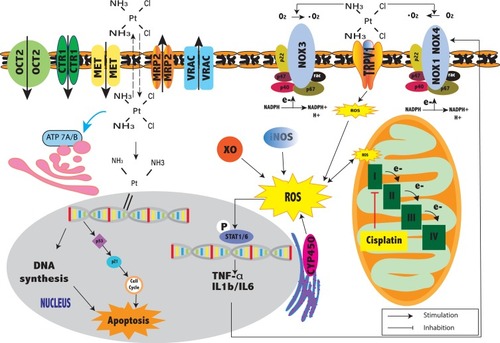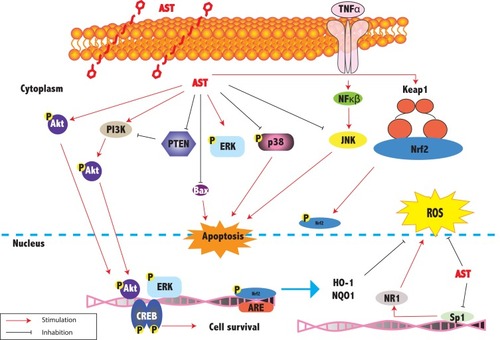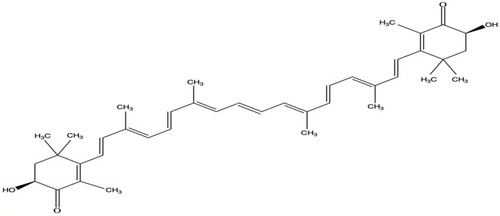Figures & data
Figure 1 Schematic of the proposed mechanism of cisplatin transportation and the generation of ROS in CIHL. Cisplatin is transported into cochlear cells by membrane transporters, including copper transporter 1 (CTR1), organic cation transporter 2 (OCT2), and mechanoelectrical transduction (MET), and is excluded by copper-extruding P-type ATPases (ATP7A and ATP7B), multidrug resistance protein 2 (MRP2), and volume-regulated anion channels (VRAC). Cisplatin induces ROS production in the inner ear via NADPH oxidase (NOX), xanthine oxidase (XO), cytochrome P450 (CYP450), induced nitric oxide synthase (iNOS), and disturbances in the mitochondrial electron transport chain.

Figure 3 Proposed mechanism by which astaxanthin inhibits ROS and apoptosis. Astaxanthin inhibits apoptosis and scavenges ROS, and modulates various intracellular pathways, predominantly MAPK, PI3K/Akt and Nrf2/ARE. It can also activate the specificity protein 1 (Sp1)–NMDA receptor subunit 1 (NR1) signalling pathway, which leads to cell death.


